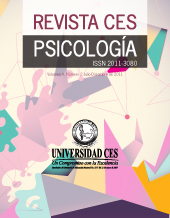Trust in Public Risk Management and Social Dynamics in the Case of Flood Risk
DOI:
https://doi.org/10.21615/cesp.14.1.5Keywords:
Risks, Risk Management, Risks Perception, Communication, Knowledge, Behaviour, Trust, FloodsAbstract
Climate change forces coastal communities exposed to floods to involve residents more actively in risk prevention, notably through official communication including behavioral recommendations. In order to improve prevention impact, this study aims to understand how inhabitants deal with this official information and integrate it into their relation to flood risk. This qualitative study is based on the theoretical postulate that the social dynamics nested in the relations between risk managers and inhabitants contributing to explain inhabitants’ relationship to flood risk. These social dynamics are analysed through the type of trust granted by inhabitants to risk managers and the level of knowledge inhabitants state to have. 20 semi-structured interviews were conducted with inhabitants of a coastal city subject to flood hazards, recruited through snowballing method until saturation point. Results suggest that inhabitants who feel that they have little knowledge are prone to display social trust toward risk managers and a positive vision of communications provided on this risk, while those who are aware about floods, endorse a calculating trust based on the technical aspects of management, and eventually a form of distrust about communications delivered by public actors. These types of trust reflect a relation to flood risk embedded in the social space where individuals and groups take positions in social dynamics. In this sense and to be successful, preventive communication should consider not only the actual content of the message but also the social mechanisms that support its interpretation, in particular the trust between the messenger and the receiver.
Downloads
References
Barnett, J., Burningham, K., Walker, G., & Cass, N. (2012). Imagined publics and engagement around renewable energy technologies in the UK. Public Understanding of Science, 21(1), 36-50. https://doi.org/10.1177/0963662510365663
Batel, S., & Devine-Wright, P. (2014). Towards a better understanding of people’s responses to renewable energy technologies: Insights from Social Representations Theory. Public Understanding of Science, 24(3), 311-325. https://doi.org/10.1177/0963662513514165
Bauer, M., Allum, N., & Miller. S, (2007). What can we learn from 25 years of PUS survey research? Liberating and expanding the agenda. Public Understanding of Science, 16, 79–95. https://doi.org/10.1177/0963662506071287
Bertoldo, R., Tanga, R., Dias, P., Guignard, S., & Schleyer-Lindenmann, A. (2020). Calculative and relational trust in the management of coastal floods and earthquakes: a comparative study. PsyEcology. Bilingual Journal of Environmental Psychology, 11(2), 193-213. https://doi.org/10.1080/21711976.2020.1734398
Breakwell, G. M. (2001). Social representational constraints upon identity processes. In K. Deaux, & G. Philogène (Eds.), Representations of the social: Bridging theoretical traditions (271–284). Blackwell Publishing.
Castro, P., & Batel, S. (2008). Social representation, Change and Resistance: On the difficulties of generalizing new norms. Culture & Psychology, 14, 475–497. https://doi.org/10.1177/1354067X08096512
Castro, P., & Mouro, C. (2016). Imagining ourselves as participating publics: An example from biodiversity conservation. Public Understanding of Science, 25(7), 858-872. https://doi.org/10.1177/0963662515581303
Charrière, J.L., Gontier, C., Meyer, M., Picon, B., & Schleyer-Lindenmann, A. (2004). (Eds.) Port-Saint-Louis-du-Rhône ou le génie de l’adaptation. Aix-en-Provence : Edisud.
CERPI (Centre Européen de Prévention du Risque d’Inondation). (2020). Gestion d’une Crise d’Inondation : suivez le guide ! Consulted on https://www.ecologie.gouv.fr/sites/default/files/guide%20gestion%20crise%20inondation%20CEPRI.pdf
Dauphiné, A., & Provitolo, D. (2007). La résilience : un concept pour la gestion des risques. Annales de géographie, 654(2), 115-125. https://doi.org/10.3917/ag.654.0115
Earle, T.C. (2010). Trust in risk management: a model-based review of empirical research. Risk Analysis, 30(4), 541-574. https://doi.org/10.1111/j.1539-6924.2010.01398.x
Earle, T. C., Siegrist, M., & Gutscher, H. (2007). Trust, risk perception, and the TCC model of cooperation. In Siegrist, M., Earle, T. C., Gutscher, H. (eds). Trust in Cooperative Risk Management. London: Earthscan. https://doi.org/10.1080/10807030802012477
Engdahl, E., & Lidskog, R. (2014). Risk, communication and trust: Towards an emotional understanding of trust. Public Understanding of Science, 23(6), 703-717. https://doi.org/10.1177/0963662512460953
Fiske, S.T., Cuddy, A.J.C., & Glick, P. (2007). Universal dimensions of social cognition: Warmth and competence. Trends in Cognitive Sciences, 11, 77–83. https://doi.org/10.1016/j.tics.2006.11.005
Giddens A. (1987). La constitution de la société. Paris: PUF. https://doi.org/10.3406/polix.1988.2014
Grothmann, T., & Reusswig, F. (2006). People at Risk of Flooding: Why Some Residents Take Precautionary Action While Others do not. Natural Hazards, 38, 101–120. https://doi.org/10.1007/s11069-005-8604-6
Joffe, H. (2003). Risk: from perception to social representation. British Journal of Social Psychology, 42, 55-73. https://doi.org/10.1348/014466603763276126
Joffe, H., & Orfali, B. (2005). De la perception à la représentation du risque : le rôle des médias. Hermès, La Revue, 41, 121-129. https://doi.org/10.4267/2042/8962
Kellens, W., Terpstra T., & De Maeyer, Ph. (2013). Perception and Communication of Flood Risks: A Systematic Review of Empirical Research. Risk Analysis, 33(1), 24-49. https://doi.org/10.1111/j.1539-6924.2012.01844.x
Mills, J., & Aronson, E. (1965). Opinion change as a function of the communicator's attractiveness and desire to influence. Journal of Personality and Social Psychology, 1(2), 173-177. https://doi.org/10.1037/h0021646
Peretti-Watel, P. (2003). La Sociologie du risque. Paris: Armand Colin.
Petts, J. (1997). The public-expert interface in local waste management decisions: experts, credibility and process. Public Understanding of Science, 6, 359-381. https://doi.org/10.1088/0963-6625/6/4/004
Poortinga, W., & Pidgeon, N.F. (2004). Trust, the asymmetry principle, and the role of prior beliefs. Risk Analysis, 24, 1475–1486. https://doi.org/10.1111/j.0272-4332.2004.00543.x
Poumadère, M., Bertoldo, R., Idier, D., Mallet, C., Oliveros, C., & Robin, M. (2015). Coastal vulnerabilities under the deliberation of stakeholders: The case of two French sandy beaches. Ocean & Coastal Management, 105, 166–176. https://doi.org/10.1016/j.ocecoaman.2014.12.024
Quéré, L. (2001). La structure cognitive et normative de la confiance. Réseaux, 108(4), 125-152. https://doi.org/10.3917/res.108.0125
Quivy, R., & Van Campenhoudt, L. (1995). Manuel de recherche en sciences sociales. Paris: Dunod.
Rousseau, D. M., Sitkin, S. B., Burt, R. S., & Camerer, C. (1998). Not so different after all: a cross discipline view of trust. Academy of Management Review, 23, 393-404. https://doi.org/10.5465/amr.1998.926617
Savoie-Zajc, L. (1996). Saturation. In A. Mucchielli (Dir.) : Dictionnaire des méthodes qualitatives en sciences humaines et sociales. Paris: Armand Colin. https://doi.org/10.4000/communicationorganisation.1901
Siegrist, M., Gutscher, H., & Earle, T.C. (2005). Perception of risk: the influence of general trust, and general confidence. Journal of Risk Research, 8, 145-156. https://doi.org/10.1080/1366987032000105315
Sjöberg, L. (2001). Political decisions and public risk perception. Reliability Engineering and System Safety, 72(2), 115–123. https://doi.org/10.1016/S0951-8320(01)00012-6
Slovic, P. (1999): Trust, emotion, sex, politics, and science: Surveying the risk-assessment battlefield. Risk Analysis, 19, 689-701. https://doi.org/10.1023/A:1007041821623
Weichselgartner, J., & Pigeon, P. (2015). The role of knowledge in disaster risk reduction, International Journal of Disaster Risk Science, 6(2), 107-116. https://doi.org/10.1007/s13753-015-0052-7
Weiss, K., Girandola, F., & Colbeau-Justin, L. (2011). Les comportements de protection face au risque naturel : De la résistance à l’engagement. Pratiques Psychologiques, 17, 251–262. https://doi.org/10.1016/j.prps.2010.02.002
Downloads
Published
How to Cite
Issue
Section
License
Copyright (c) 2020 CES Psicología

This work is licensed under a Creative Commons Attribution-NoDerivatives 4.0 International License.
Each manuscript is accompanied by a statement specifyingThat the materials are unpublished, that have not been previously published in printed formatElectronic and that they will not be presented to any other means before knowing the decision of the magazine. ThroughoutIn case, any previous publication, sea in printed or electronic form, must be made known to the editorial staffWriting The authors attach a signed statement stating that, and the manuscript is acceptedFor publication, the rights of reproduction are the exclusive property of the Journal CES Psychology.| Article metrics | |
|---|---|
| Abstract views | |
| Galley vies | |
| PDF Views | |
| HTML views | |
| Other views | |




